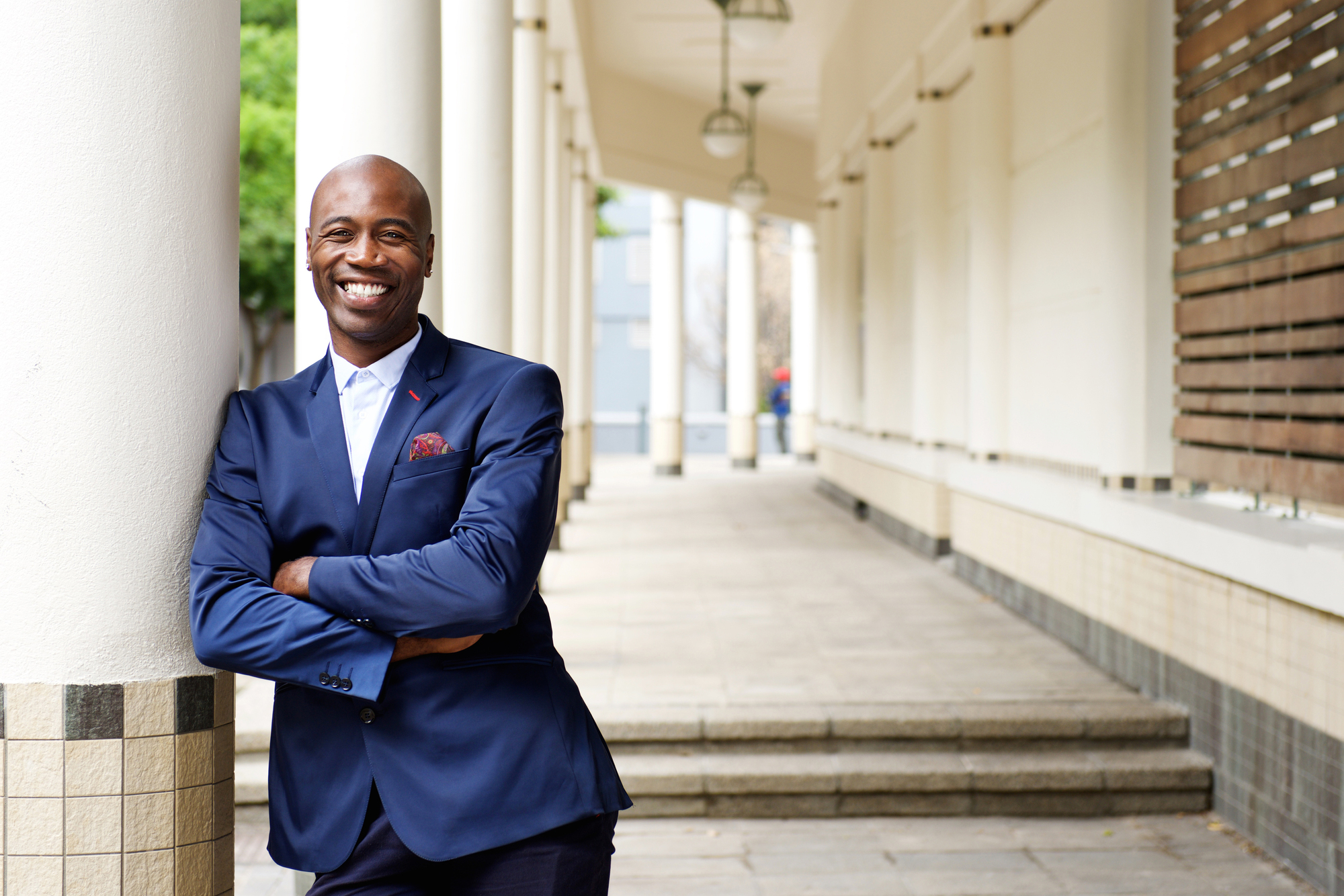Successful people make better decisions because they do these things:

Your success or lack thereof partly comes down to the decisions you make. So how can you go about making better, more well-thought-out decisions? Well, why not take a leaf out of the books of already successful people? Here are the strategies they employ to ensure they make the best decision as often as possible.
1. They are aware of their biases.

We all have biases that distort our thinking and influence our beliefs. These biases affect our decisions and even cause us to jump to conclusions about people we know little or nothing about.
Pretending we don’t have biases won’t make them go away. The only way to lessen their effect on our decision-making is by acknowledging them and being aware of their influence.
Many types of biases can affect us and below are some of the common ones:
Confirmation bias
This bias refers to our tendency to believe information that confirms our existing beliefs or thoughts. Examples of this include only listening to news stations or following social media influencers that share information that aligns with our viewpoints or beliefs. People with this bias typically refuse to listen to any opposing arguments and consider their beliefs to be accurate ones.
Hindsight bias
The hindsight bias is the habit of looking back on past events as more predictable than they were. An example of this bias is believing you can predict which stocks will be profitable or thinking you knew the answers to questions you missed on a test.
The anchoring bias
The likelihood you’ll be influenced by the first piece of information you receive on a topic or subject is called the anchoring bias. This bias can affect doctors whose first impression of a patient wrongly affects subsequent diagnostic assessments of that patient.
The halo effect
This is a tendency where our first perception of a person affects our overall impression of them. An example of this bias is viewing attractive people as being smarter, kinder, or funnier than people who aren’t as attractive.
The optimism bias
When we overestimate the probability of good things happening while underestimating the possibility of bad things occurring, we are being influenced by optimism bias. We are often too optimistic for our own good, assuming that we won’t fall victim to bad events like disease, death, or divorce.
The above examples are just five of the many biases that we may have. There are many more that color our perception of the world and the people around us.
To lessen their effect, question your opinions or assumptions about a situation when you’re making a decision. Ask yourself why you have these opinions. Where do they come from? What evidence do you have to support or negate them in this case?
By acknowledging them and questioning their accuracy, you reduce their effect on your decision-making.
2. They listen to their gut.

Don’t base all your decisions on your gut feeling. But sometimes your gut is right on the money.
If you face a decision between two options that are fairly similar, listening to your gut can help you decide faster. Also, when you face an ethical dilemma, listening to your gut instinct can stop you from making a decision that goes against your morals or values.
Given how susceptible we are to being affected by biases and our emotions, falling back on your gut as the foolproof determiner in your decision-making process will probably push you to make more rash decisions than you’d like.
So, before you choose to rely on your gut instinct alone, look at the available information, question your assumptions, and evaluate your emotions. If everything lines up, go with your gut.
3. They avoid analysis paralysis.

Information overload can be a real problem in the decision-making process. In the age of lightning-fast internet access and social media, information is at your fingertips.
In a matter of seconds, you can get hundreds of articles on a single topic on Google. This can put you in an endless loop of analyzing information. You will find books you “need” to read, articles you “must” review, and videos you “have” to watch.
That’s a lot of time spent consuming information.
Let’s say you spend hours poring over all the information available to you. By the time you’re ready to decide, you’re unable to because you have entered analysis paralysis.
Analysis paralysis occurs when you overthink or overanalyze a problem and cannot decide.
When you feel yourself getting close to analysis paralysis:
– Don’t waste any more time looking for the “best” option
– Don’t let too much information obscure the important information
– Don’t delay your decision. Decide based on the information you’ve already gained
Trying to review all the information on a subject will only lead to confusion and prevent you from deciding. You need to trust that you have enough information to make an educated decision.
4. They aren’t overly emotional when making a decision.

Part of being a human being is dealing with our feelings. We can’t shut them off and it’s not beneficial to us, in the long run, to do so.
With decision-making, to avoid letting your emotions take control, you need to be aware of what you are feeling. Are you feeling anxious? Angry? Excited? Upset? You must identify your feelings because positive or negative, they can affect what you decide to do.
If you’re feeling anxious, figure out why. Is there something about the decision you’re not comfortable with? Are you feeling really happy? Could your happiness be prompting you to see the situation or solution as more positive than it is?
Be aware of your feelings and how they could affect your decisions.
5. They listen to their body.

Are you stressed? Exhausted? Hungry?
All of these can negatively affect any decision you make.
If your office presents you with a sensitive issue that needs you to make a critical decision, but you’re hungry and were just about to rush off to grab a bite to eat, it’s best you postpone any decision until you’ve resolved your hunger.
What’s likely to happen is you’ll only half listen to the information given to you about the issue and rush to provide a solution because your mind is on your stomach. If you can’t get away for a full meal, at least have a quick snack before concluding on anything.
Are you tired and struggling to stay awake? Stop thinking about the problem and take a quick nap. According to the Mayo Clinic, you should aim for a 10- to 20-minute nap because anything more can leave you feeling groggy. A quick power nap not only reduces fatigue, it can also increase your performance and make you more alert.
6. They avoid decision fatigue.

Are you making back-to-back decisions throughout the day? This can lead to decision fatigue, also known as ego depletion. It refers to the idea that after making a lot of decisions, your ability to make even more decisions is drastically reduced.
A study titled showed that “every consecutive decision that nurses make since their last break produces a predictable shift toward more conservative and less resource efficient decisions.”
Decision fatigue affects all decisions, big or small.
If you start to feel tired or are experiencing brain fog, it might be time for you to give your brain a break.
Try reducing the number of decisions you need to make in a day by automating some and removing options from others. For example, consider simplifying your wardrobe or planning your meals and preparing them ahead for the week.
Is it possible to delegate some decisions you have to make? You might not need to be involved with each one.
Establishing a daily routine can also help you reduce the time you spend trying to figure out what to do next.
7. They seek out different perspectives.

Sometimes it helps to get a different perspective. You might simply be too close to a problem to see it correctly. Getting another person’s opinion on the matter could be very helpful.
By asking for someone’s perspective, you allow them to help you see the challenge from a new angle. They might open your eyes to risks you hadn’t considered before or solutions you wouldn’t have thought of.
Ask for support if you are stuck on a problem or between two solutions. A fresh perspective might lead you to the right solution.
8. They reflect on their mistakes.

One surefire way to improve your decision-making skills is to make a habit of reflecting on your mistakes. You’re bound to mess up once in a while. Sometimes you’ll make a minor mistake. Other times, it’ll be big.
Whatever the case may be, ensure you learn from all of them. Think about what caused the situation, why your decision was wrong, and what you should have done differently. You will always find something to learn. Reflecting on that will help ensure you don’t repeat the mistake(s) in the future.
9. They talk to themselves like they would a friend.

How do you advise your friends? What about when a close friend comes to you for advice? How do you respond to people you care about coming to you for advice?
You probably listen patiently while they’re talking, refusing to interrupt so they can say everything that’s on their mind. Most likely, you ask clarifying questions to ensure you have the full picture of the problem at hand. Because you are a good friend, you help them see all sides of the issue.
Do the same thing for yourself.
When you have a problem before you, pretend your friend brought the issue to you for advice on how he/she should resolve it. Forget about all your initial assumptions and adopt a neutral standpoint. Consider the problem from both positive and negative angles.
Ask yourself clarifying questions and make sure you fully understand everything at stake. Look for perspectives you hadn’t thought of before.
Advise yourself with the same level of compassion you would a friend.
10. They may use the decision-making quadrant.

The decision-making quadrant is a great tool for when you have a decision to make, but you can’t get clarity on which way to go or what to choose.
With a piece of paper and a pen, find a quiet area to work on the quadrant.
All you need to do is divide the paper up into four quadrants and label each one as follows:
What happens if this happens?
What will change? What are the pros of this happening? How will things improve if this happens?
What happens if this doesn’t happen?
What are the pros of this not happening? What will you keep, or gain, if things stay the same?
What won’t happen if this happens?
This question delves into the negative side of the decision. If this happens, what will you lose or miss out on?
What won’t happen if this doesn’t happen?
This question also looks at the negative side of the decision or the negative angle of this decision not happening. What will you lose or miss if nothing changes and everything stays the same?
By the time you go through the four quadrants and answer these questions, the most appropriate choice will become more obvious to you.
11. They stop and breathe.

A 2019 study showed that deep breathing increases vagal nerve activity, which is indexed by heart rate variability (HRV). HRV is associated with better decision-making. The research compared the effects of two different breathing patterns on HRV and found that both increased several parameters of HRV.
Deep breathing has many benefits, and research has now proven improved decision-making to be one of them.
A simple deep breathing exercise you can try is the 5-2-7 breathing exercise. This exercise not only helps with decision-making, it also has been found to help lower stress levels.
You simply inhale to the count of 5. Then hold your breath for 2 counts. Finally, exhale for 7 counts. You can repeat this exercise for two minutes and then return to the decision you need to make.
12. They may use the OODA Loop Model.

The OODA Loop Model is another decision-making framework you can try. Military strategist and US Air Force Colonel John Boyd designed this technique to help military personnel make quick decisions during dangerous or volatile situations when there is no time to gather any information.
The four steps of this model are :
Observe
This step is all about reviewing the data. You figure out what the problem or threat is and observe the environment or any situational factors. Gather the information quickly and be prepared to decide based on it.
Orient
The orient stage refers to your current worldview or assessment of the overall situation. Here, you put the information you gathered in step one into context—where are you now (in relation to the problem) and where are you going? This requires a high level of situational awareness, where you make sense of all the information at your disposal.
Decide
This is where you make a decision. Here, you run through the options and picture in your mind how to best gain an advantage or achieve a win.
Act
At this stage, you act on the decision you just made. Even if successful, after taking action, you go back to the first step of observation and the loop starts all over again.
The OODA loop continues until you’ve either positively or negatively resolved the challenge or problem.
13. They apply the 10/10/10 rule.

This is a simple decision-making technique that you can apply to both personal and professional decisions.
When you must decide on something, consider how your decision will make you feel in:
– 10 minutes
– 10 months
– 10 years
This technique helps you keep the future consequences of your action in mind so you can resist the urge to go for short-term rewards that don’t lead to lasting satisfaction.
For example, let’s say you are considering breaking up with your significant other.
– 10 minutes from when you break up with him/her, you’re likely to feel a jumble of different emotions, from regret to being at peace with your decision to sorrow at the end of a relationship.
– 10 months from the breakup, you might be in a new relationship or enjoying dating around and meeting different people.
– 10 years after the breakup, you probably would have completely healed and can see why the breakup needed to happen so you both could grow as people.
With this rule, you’re better able to align your decisions with your values and move forward from indecision.
14. They engage in mindfulness meditation.

Have you ever been in a situation or a relationship where you’ve put in so much of your resources (time, money, or effort) that you are reluctant to change or leave? That’s called the sunk cost bias. This bias refers to our reluctance to cut our losses when it’s clear we’ve made a bad decision or investment or chosen the wrong person.
A study showed that increased mindfulness reduces our tendency toward sunk cost bias.
Mindfulness meditation can also help you increase your ability to be proactive, generate options, and clarify the objectives of a problem.
A simple mindfulness meditation exercise to try is the sitting meditation:
Sit comfortably with your back straight, feet flat on the floor, and hands in your lap. Breathing through your nose, focus on your breath, moving in and out of your body. If physical sensations or thoughts interrupt your meditation, note the experience and then return your focus to your breath.
Mindfulness meditation exercises don’t take a lot of time and effort but offer a lot of advantages to decision-making.
15. They write a list of pros and cons.

This technique is one you’re probably already familiar with. You simply write a list of the pros and cons of your decision.
Ask yourself what are the best and worst things that could happen to you and then identify any risks involved in your decision.
If the pros of your decision far outweigh the cons, then proceed. But if they don’t, look for an option that mitigates the risks or reduces the cons.
Go with the decision you are most comfortable with.









